 W
WThe Action of 8 May 1941 was a single ship action fought during the Second World War by the British heavy cruiser HMS Cornwall and the Kriegsmarine auxiliary cruiser Pinguin/Schiff 33. The engagement took place in the Indian Ocean off the Seychelles archipelago, north of Madagascar. Pinguin caused slight damage to Cornwall, before its fire on Pinguin caused an explosion and sank it.
 W
WThe Aarhus Air Raid took place on 31 October 1944, when 25 Mosquitoes from 140 Wing Royal Air Force (RAF) of the 2nd Tactical Air Force, bombed the Gestapo headquarters at the University of Aarhus. After the Second World War, the RAF called the mission the most successful of its kind during the war.
 W
WThe Action of 22 August 1917, took place during the First World War, in the Ypres Salient on the Western Front as part of the Third Battle of Ypres. The engagement was fought by the Fifth Army of the British Expeditionary Force and the German 4th Army. During the Battle of Langemarck, the British had advanced north of the village but had been defeated further south and failed to capture the Wilhelmstellung, the third German defensive position. At a conference with the Fifth Army corps commanders on 17 August, Gough arranged for local attacks to gain jumping-off positions for another general attack on 25 August. At the Action of the Cockcroft on 19 August, XVIII Corps and the 1st Tank Brigade had captured five fortified farms and strongpoints for a fraction of the casualties of a conventional attack.
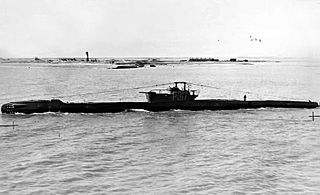 W
WThe Action of 14 February 1944 refers to the sinking of a German U-boat off the Strait of Malacca during World War II by a British submarine. It was one of the few naval engagements of the Asian and Pacific theater involving German and Italian forces.
 W
WThe Action of 1 November 1944, also known as the Ambush off Pag Island, was a naval engagement in the Kvarner Gulf of the Adriatic Sea, between the islands of Pag and Lussino on 1 November 1944. It was fought between a British Royal Navy destroyer flotilla and a Kriegsmarine force of two corvettes and a destroyer. The German flotilla was deployed to escort a convoy retreating from Šibenik to Fiume. The British managed to destroy all three German ships in return for no loss.
 W
WThe Action of 28 January 1945 was an inconclusive naval battle of the Second World War fought between two British Royal Navy light cruisers and three Kriegsmarine destroyers near Bergen, Norway. The battle was the last of many actions between British and German warships off Norway during the war and the second-to-last surface engagement to be fought by the Kriegsmarine. It resulted in heavy damage to one of the German destroyers and light damage to another destroyer and both British cruisers.
 W
WThe Anglo-German Naval Agreement (AGNA) of 18 June 1935 was a naval agreement between Great Britain and Germany regulating the size of the Kriegsmarine in relation to the Royal Navy.
 W
WThe arms race between Great Britain and Germany that occurred from the last decade of the nineteenth century until the advent of World War I in 1914 was one of the intertwined causes of that conflict. While based in a bilateral relationship that had worsened over many decades, the arms race began with a plan by German Admiral Alfred von Tirpitz in 1897 to create a fleet in being to force Britain to make diplomatic concessions; Tirpitz did not expect the Imperial German Navy to defeat the Royal Navy.
 W
WThe Battle of Sept-Îles was a naval battle fought on the night of 22/23 October 1943 during World War II as part of the Atlantic campaign. The battle took place off the Sept-Îles near the French coast in the English Channel between a light cruiser and six destroyers of the British Royal Navy, and a minesweeper and torpedo boat flotillas of the German Kriegsmarine hoping to intercept and escort a blockade runner. The battle ended with HMS Charybdis being sunk and the Hunt-class destroyer HMS Limbourne being scuttled after suffering damage; nearly 500 British sailors lost their lives in the battle. The battle was the last surface fleet action of the war where the Royal Navy was defeated, and the last German surface fleet action victory.
 W
WThe Battle of the Barents Sea was a World War II naval engagement on 31 December 1942 between warships of the German Navy (Kriegsmarine) and British ships escorting convoy JW 51B to Kola Inlet in the USSR. The action took place in the Barents Sea north of North Cape, Norway. The German raiders' failure to inflict significant losses on the convoy infuriated Hitler, who ordered that German naval strategy would henceforth concentrate on the U-boat fleet rather than surface ships.
 W
WThe Battle of the Falkland Islands was a First World War naval action between the British Royal Navy and Imperial German Navy on 8 December 1914 in the South Atlantic. The British, after their defeat at the Battle of Coronel on 1 November, sent a large force to track down and destroy the German cruiser squadron. The battle is commemorated every year on 8 December in the Falkland Islands as a public holiday.
 W
WThe Battle of the Bay of Biscay was a naval action that took place on 28 December 1943 during World War II as part of the Atlantic campaign. The battle took place in the Bay of Biscay between two light cruisers of the British Royal Navy, and a destroyer and a torpedo boat flotilla of the German Kriegsmarine hoping to intercept and escort a blockade runner. The battle was fought as part of the Allied Operation Stonewall which was to intercept German blockade runners off the west coast of France. In the confused action that followed the two British cruisers HMS Enterprise and HMS Glasgow respectively sank T26, together with her sister ship T25 and the destroyer Z27.
 W
WThe Berlin Blockade was one of the first major international crises of the Cold War. During the multinational occupation of post–World War II Germany, the Soviet Union blocked the Western Allies' railway, road, and canal access to the sectors of Berlin under Western control. The Soviets offered to drop the blockade if the Western Allies withdrew the newly introduced Deutsche Mark from West Berlin.
 W
WDarmstadt was bombed a number of times during World War II. The most devastating air raid on Darmstadt occurred on the night of 11/12 September 1944 when No. 5 Group of the Royal Air Force (RAF) bombed the city. 66,000 of the 110,000 inhabitants of Darmstadt at the time became homeless. Darmstadt lost between 12,500 and 13,500 inhabitants during World War II. The calligraphic memorial Durmstädter Brandnamen lists about 4,000 names. Darmstadt had several major industrial targets including Merck and Rohm and Haas chemical works as well as military communications networks.
 W
WThe bombing of Dresden was a British-American aerial bombing attack on the city of Dresden, the capital of the German state of Saxony, during World War II. In four raids between 13 and 15 February 1945, 722 heavy bombers of the British Royal Air Force (RAF) and 527 of the United States Army Air Forces (USAAF) dropped more than 3,900 tons of high-explosive bombs and incendiary devices on the city. The bombing and the resulting firestorm destroyed more than 1,600 acres (6.5 km2) of the city centre. An estimated 22,700 to 25,000 people were killed. Three more USAAF air raids followed, two occurring on 2 March aimed at the city's railway marshalling yard and one smaller raid on 17 April aimed at industrial areas.
 W
WDuring World War II, the industrial town of Essen, was a target of Allied strategic bombing. The Krupp factory was an important industrial target, Essen was a "primary target" designated for area bombing by the February 1942 British Area bombing directive.
 W
WBombing of Frankfurt am Main by the Allies of World War II killed about 5,500 residents and destroyed the largest medieval city centre in Germany.
 W
WThe Bombing of Hannover was a series of eighty-eight air raids by RAF Bomber Command and the United States Army Air Forces on the German city of Hanover during World War II. 4,748 residents and 2,034 others were killed. Around 1,000 aerial mines, 34,000 high explosive bombs, 900,000 incendiary bombs and 50,000 fire bombs were dropped. The heaviest raid was that by the RAF on the night of 8/9 October 1943, killing 1,245 people. This was an example of the carpet bombing of suburban and residential civilian targets laid out in the 14 February 1942 Area Bombing Directive.
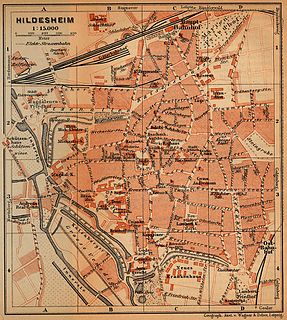 W
WThe German city of Hildesheim, c. 30 kilometres south of Hanover, was the target of eight Allied air raids in 1944 and 1945 and suffered considerable bomb damage.
 W
WThe bombing of Königsberg was a series of attacks made on the city of Königsberg in East Prussia during World War II. The Soviet Air Force had made several raids on the city since 1941. Extensive attacks carried by RAF Bomber Command destroyed most of the city's historic quarters in the summer of 1944. Königsberg was also heavily bombed during the Battle of Königsberg, in the final weeks of the war.
 W
WDuring World War II, the city of Lübeck was the first German city to be attacked in substantial numbers by the Royal Air Force. The attack on the night of 28 March 1942 created a firestorm that caused severe damage to the historic centre, with bombs destroying three of the main churches and large parts of the built-up area. It led to the retaliatory "Baedeker" raids on historic British cities.
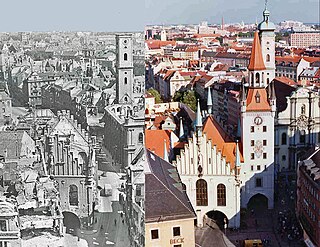 W
WThe bombing of Munich took place mainly in the later stages of World War II. Munich was, and is, a significant German city, as much culturally as well as industrially. Augsburg, twenty miles to the west, was a main centre of diesel engine production. Although some considerable distance from the United Kingdom, Munich is not a difficult city to find from the air, mainly due to its size, and possibly its proximity to the Austrian Alps to the south-east as a visual reference point. Munich was protected (initially) by its distance from the United Kingdom.
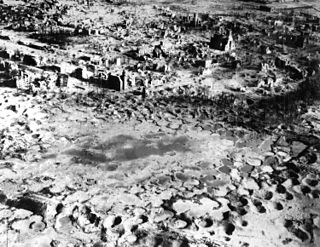 W
WThe German town of Wesel was heavily bombed in Allied air raids during World War II. Between this and the attacks in support of the crossing of the Rhine, the town was devastated.
 W
WThe Bombing of Würzburg in World War II was a large-scale air attack on the city of Würzburg, and was part of the strategic bombing campaign by the Allies against Nazi Germany. Although lacking major armaments industries and hosting around 40 hospitals at the time, Würzburg was targeted as a traffic hub and as part of the attempt by Bomber Command to break the spirit of the German people. The major raid occurred on March 16, 1945, when Royal Air Force bombers dropped incendiary bombs that set fire to much of the city, killing an estimated 5,000 people and almost completely obliterating the historic town. Almost 90% of the buildings were destroyed by a raid that lasted less than 20 minutes.
 W
WDuring World War II, the German city of Heilbronn was bombed numerous times by the British Royal Air Force and the United States Army Air Forces. The largest air-raid occurred on December 4, 1944, but Heilbronn was targeted several times before and after until the end of World War II. Altogether, an estimated 7,000 inhabitants of the city lost their lives during bombings.
 W
WDuring World War II, Braunschweig was attacked by Allied aircraft in 42 bombing raids. On the night of 14/15 October 1944, the attack by No. 5 Group Royal Air Force (RAF) marked the high point of the destruction of Henry the Lion's city during the war. The air raid was part of Operation Hurricane, which was designed to demonstrate the capabilities of the Allied bombing campaign. The attack caused a massive conflagration, that might have developed into a firestorm, and resulted in Braunschweig burning continuously for two and a half days from 15 to 17 October. More than 90 percent of the medieval city centre was destroyed, changing the city's appearance to the present day.
 W
WThe Bombing of Bremen in World War II by the British Royal Air Force and US Eighth Air Force targeted strategic targets in the state Free Hanseatic City of Bremen, which had heavy anti-aircraft artillery but only 35 fighter aircraft in the area. In addition to Wesermünde/Bremerhaven, targets were also in Farge and Vegesack. Bremen also included concentration camps such as Bremen-Farge and Bremen-Vegesack. The city of Bremen was captured in April 1945.
 W
WThe Channel Dash was a German naval operation during the Second World War. A Kriegsmarine squadron comprising the two Scharnhorst-class battleships, the heavy cruiser Prinz Eugen and their escorts was evacuated from Brest in Brittany to German ports. Scharnhorst and Gneisenau had arrived in Brest on 22 March 1941 after the success of Operation Berlin in the Atlantic. More raids were planned and the ships were refitted at Brest. The ships were a threat to Allied trans-Atlantic convoys and RAF Bomber Command attacked them from 30 March 1941. Gneisenau was hit on 6 April 1941 and Scharnhorst on 24 July 1941, after dispersal to La Pallice. In late 1941, Adolf Hitler ordered the Oberkommando der Marine to plan an operation to return the ships to German bases against a British invasion of Norway. The short route up the English Channel was preferred to a detour around the British Isles for surprise and air cover by the Luftwaffe and on 12 January 1942, Hitler gave orders for the operation.
 W
WThe Action of the Cockcroft, 19 August 1917, took place in the First World War on the Western Front, during the Third Battle of Ypres. At the Battle of Langemarck the infantry of the 48th Division and the 11th (Northern) Division of XVIII Corps had been stopped well short of their objectives. The British had been shot down by the German garrisons of blockhouses and pillbox outposts of the Wilhelmstellung. At a conference called by General Hubert Gough the Fifth Army commander, on 17 August, Gough and the corps commanders arranged for local attacks to be made at various points to reach a good jumping-off line for another general attack on 25 August.
 W
WThe German city of Cologne was bombed in 262 separate air raids by the Allies during World War II, all by the Royal Air Force (RAF) but for a single failed post-capture test of a guided missile by the United States Army Air Forces. A total of 34,711 long tons of bombs were dropped on the city by the RAF. 20,000 people died during the war in Cologne due to aerial bombardments.
 W
WThe Battle of the Denmark Strait was a naval engagement on 24 May 1941 in the Second World War, between ships of the Royal Navy and the Kriegsmarine. The British battleship HMS Prince of Wales and the battlecruiser HMS Hood fought the German battleship Bismarck and the heavy cruiser Prinz Eugen, which were attempting to break out into the North Atlantic to attack Allied merchant shipping.
 W
WDuisburg was bombed a number of times by the Allies during World War II. The most devastating air raids on Duisburg occurred during October 1944 when the city was bombed by the Royal Air Force (RAF).
 W
WThe German Mine Sweeping Administration (GMSA) was an organisation formed by the Allies from former crews and vessels of the Nazi Germany's Kriegsmarine for the purpose of mine sweeping after the Second World War, predominantly in the North Sea and Baltic Sea, which existed from June 1945 to January 1948.
 W
WThe Battle of the Heligoland Bight was the first "named" air battle of the Second World War, which began the longest air campaign of the war, the Defence of the Reich. On 3 September 1939, the United Kingdom declared war on Nazi Germany after the German invasion of Poland, which started the European War. The British did not assist Poland by land or sea but RAF Bomber Command flew several missions against German targets. A number of these air raids were directed at Kriegsmarine warships in German ports to prevent their use in the Battle of the Atlantic. With the front lines static between September 1939 and May 1940, a period known as the "Phoney War" set in, with little fighting on land or in the air.
 W
WThe Battle of Jutland was a naval battle fought between Britain's Royal Navy Grand Fleet, under Admiral Sir John Jellicoe, and the Imperial German Navy's High Seas Fleet, under Vice-Admiral Reinhard Scheer, during the First World War. The battle unfolded in extensive manoeuvring and three main engagements, from 31 May to 1 June 1916, off the North Sea coast of Denmark's Jutland Peninsula. It was the largest naval battle and the only full-scale clash of battleships in that war. Jutland was the third fleet action between steel battleships, following the Battle of the Yellow Sea in 1904 and the decisive Battle of Tsushima in 1905, during the Russo-Japanese War. Jutland was the last major battle in world history fought primarily by battleships.
 W
WThe Battle of Río de Oro was a single-ship action fought in August 1914 during the First World War, when HMS Highflyer attacked the German SS Kaiser Wilhelm der Grosse off Río de Oro on the coast of Northwest Africa.
 W
WThe Kassel World War II bombings were a set of Allied strategic bombing attacks which took place from February 1942 to March 1945. In a single deadliest raid on 22–23 October 1943, 150,000 inhabitants were bombed-out, at least 10,000 people died, the vast majority of the city center was destroyed, and the fire of the most severe air raid burned for seven days. The US First Army captured Kassel on 3 April 1945, where only 50,000 inhabitants remained, versus 236,000 in 1939.
 W
WThe Le Paradis massacre was a war crime committed by members of the 14th Company, SS Division Totenkopf, under the command of Hauptsturmführer Fritz Knöchlein. It took place on 27 May 1940, during the Battle of France, at a time when troops of the British Expeditionary Force (BEF) were attempting to retreat through the Pas-de-Calais region during the Battle of Dunkirk.
 W
WDuring World War II, Leipzig was repeatedly attacked by British as well as American air raids. The most severe attack was launched by the Royal Air Force in the early hours of 4 December 1943 and claimed more than 1,800 lives. Large parts of the city center were destroyed, while factories experienced temporary shortfalls in production, had to move production facilities or even were decentralized.
 W
WThe military history of New Zealand during World War II began when New Zealand entered the Second World War by declaring war on Nazi Germany with Great Britain. The state of war with Germany was officially held to have existed since 9:30 pm on 3 September 1939, simultaneous with that of Britain, but in fact New Zealand's declaration of war was not made until confirmation had been received from Britain that their ultimatum to Germany had expired. When Neville Chamberlain broadcast Britain's declaration of war, a group of New Zealand politicians listened to the shortwave radio in Carl Berendsen's room in the Parliament Buildings. Because of static on the radio they were initially not certain what Chamberlain had said until a coded telegraph message was received from London. This message did not arrive until just before midnight as the messenger boy with the telegram in London took shelter because of a (false) air-raid warning. The Cabinet acted after hearing the Admiralty's notification to the fleet that war had broken out. The next day Cabinet approved nearly 30 war regulations as laid down in the War Book, and after completing the formalities with the Executive Council the Governor-General, Lord Galway, issued the Proclamation of War, backdated to 9.30 pm on 3 September.
 W
WThe Affair of Néry was a skirmish fought on 1 September 1914 between the British Army and the German Army, part of the Great Retreat from Mons during the early stages of the First World War. A British cavalry brigade preparing to leave their overnight bivouac were attacked by a German cavalry division of about twice their strength, shortly after dawn. Both sides fought dismounted; the British artillery was mostly put out of action in the first few minutes but a gun of L Battery, Royal Horse Artillery kept up a steady fire for two and a half hours, against a full battery of German artillery. British reinforcements arrived at around 8:00 a.m., counter-attacked the Germans and forced them to retreat; the German division was routed and did not return to combat for several days. Three men of L Battery were awarded the Victoria Cross for their part in the battle' the battery was later awarded the honour title of "Néry", the only British Army unit to have this as a battle honour.
 W
WOperation Obviate was an unsuccessful British air raid of World War II which targeted the German battleship Tirpitz. It was conducted by Royal Air Force heavy bombers on 29 October 1944, and sought to destroy the damaged battleship after she moved to a new anchorage near Tromsø in northern Norway.
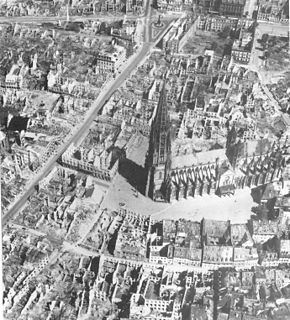 W
WOperation Tigerfish was the military code name in World War II for the air raid on Freiburg in the evening of 27 November 1944 by the Royal Air Force with about 2,800 dead.
 W
WThe Oslo Mosquito raid was a British air raid on Oslo, Norway, during the Second World War. The target of the raid was the Victoria Terrasse building, the headquarters of the Gestapo. It was intended to be a "morale booster" for the Norwegian people and was scheduled to coincide with a rally of Norwegian collaborators, led by Vidkun Quisling.
 W
WThe Raid on Scarborough, Hartlepool and Whitby on 16 December 1914, was an attack by the Imperial German Navy on the British ports of Scarborough, Hartlepool, West Hartlepool and Whitby. The attack resulted in 592 casualties, many of them civilians, of whom 137 died. The attack caused public outrage in Britain towards the German Navy and against the Royal Navy for its failure to prevent the raid.
 W
WThe Raid on Yarmouth, which took place on 3 November 1914, was an attack by the Imperial German Navy on the British North Sea port and town of Great Yarmouth. Little damage was done to the town since shells only landed on the beach, after German ships laying mines offshore were interrupted by British destroyers. HMS D5, a submarine, was sunk by a German mine as it attempted to leave harbour and attack the German ships. A German armoured cruiser was sunk after striking two German mines outside its home port.
 W
WOperation Sea Lion, also written as Operation Sealion, was Nazi Germany's code name for the plan for an invasion of the United Kingdom during the Battle of Britain in the Second World War. Following the Fall of France, Adolf Hitler, the German Führer and Supreme Commander of the Armed Forces, hoped the British government would accept his offer to end the war, and he reluctantly considered invasion only as a last resort if all other options failed.
 W
WThe Capture of Wytschaete was a tactical incident in the Battle of Messines on the Western Front during the First World War. On 7 June, the ridge was attacked by the British Second Army; the 36th (Ulster) Division and the 16th (Irish) Division of IX Corps captured the fortified village of Wytschaete on the plateau of Messines Ridge, which had been held by the German 4th Army since the First Battle of Ypres.
 W
WThe Bombardment of Yarmouth and Lowestoft, often referred to as the Lowestoft Raid, was a naval battle fought during the First World War between the German Empire and the British Empire in the North Sea.